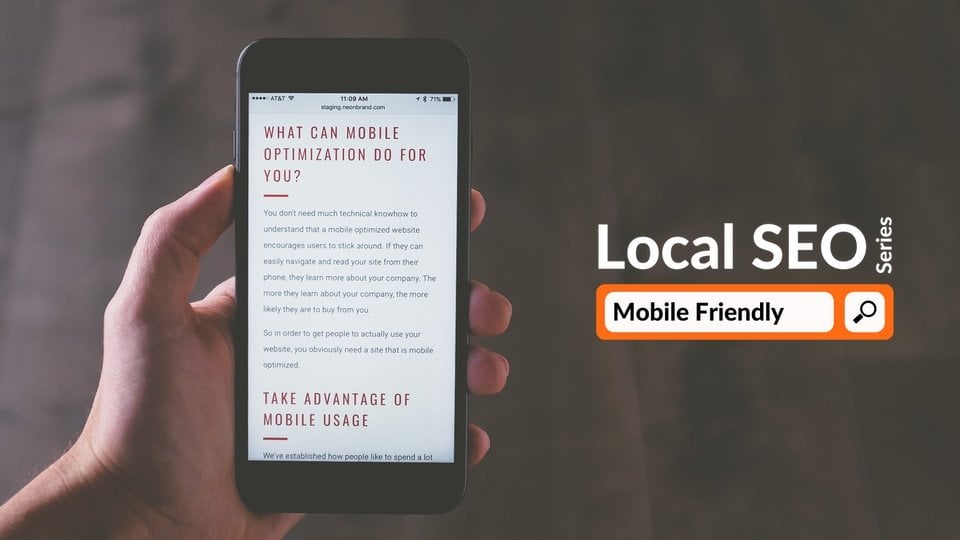In todays digital world, staying ahead of the curve has become increasingly important for businesses looking to stay competitive. With the rapid shift from desktop to mobile search engine optimization (SEO), understanding how to maximize visibility and reach on both platforms is essential.
This article will discuss the key differences between desktop SEO and mobile SEO, as well as strategies for making sure your business stays up-to-date with this evolving technology. Well explore innovative ways to ensure that your website is optimized for both desktop and mobile devices, allowing you to maximize visibility in an ever-changing landscape.
From content optimization tips to keyword research tactics, this article will provide valuable insight into what it takes to make sure your business remains ahead of the competition when it comes to SEO strategy.
Understanding Mobile SEO: Analyzing the Benefits and Challenges
As the world continues to shift from desktop to mobile, understanding mobile SEO is becoming increasingly critical for businesses. By analyzing the benefits and challenges of this transition, companies can stay ahead of the curve and ensure they are equipped with the latest strategies for success.
Mobile SEO offers a distinct set of advantages compared to traditional desktop search engine optimization (SEO). For one, it allows businesses to reach their target audience quickly and easily – no matter where they are or what device they’re using. Additionally, it facilitates better customer engagement since users can access content more conveniently on their smartphones or tablets.
Despite these clear benefits, there are also certain obstacles that come with mobile SEO. Since many users rely on voice-activated searches via digital assistants such as Siri and Alexa, optimizing content for verbal queries is essential in order to achieve optimal results.
Furthermore, due to its dynamic nature, managing changes in ranking algorithms across different devices can prove difficult at times. In conclusion, while there may be some challenges associated with embracing mobile SEO practices fully, taking advantage of its potential rewards far outweighs any drawbacks posed by transitioning away from desktop-based techniques alone.
With careful planning and execution based on thorough research into user behavior trends and relevant tools available today – businesses can make sure that they remain competitive in an ever-evolving online landscape!
Preparing Your Website for Mobile Search Engines

As businesses continue to move online, many are now recognizing the importance of making their websites mobile-friendly. To keep up with this trend and stay ahead of competition, companies must prepare their website for mobile search engines.
This includes optimizing content for small screens, ensuring quick loading speeds, and prioritizing user experience. One key factor is keyword optimization.
Identify the most commonly used terms that your target audience searches when looking for products or services similar to yours and incorporate those into meta descriptions as well as page titles and headings. Using keywords strategically will help ensure that your site appears at the top of organic search results when users look on their phones or tablets.
Another important step is creating a responsive design layout that works on any device size without compromising speed or functionality. Responsive web design automatically adjusts content—including images, videos, text blocks—to fit any screen size while preserving page structure across devices so visitors have an optimal experience no matter where they view from.
Additionally, leveraging Accelerated Mobile Pages (AMP) can help pages load more quickly which improves user engagement levels significantly as well as ranking on Google Search Engine Results Page (SERP). Finally, it’s essential to prioritize user experience over all else by keeping clutter out of the way and focusing on providing concise information in a visually appealing manner through visuals like infographics or videos if possible to make sure everyone can access your companys digital presence easily regardless of device type being used .
By taking these steps youll be able to ensure your website rises above competitors in todays increasingly competitive landscape when people turn to their phones instead of desktops for answers online – something businesses should take seriously if they want to remain successful in todays world!
Optimizing Content for Maximum Visibility on Small Screens

As marketers and content creators transition from optimizing for desktop to mobile SEO, it is essential to understand how best to optimize content for maximum visibility on small screens. Writing content with a good balance of complexity and variation can help ensure that your message reaches its intended audience in an effective way.
When creating content for smaller devices, brevity should be top of mind. Aim for succinct yet powerful messaging which gets the point across without sacrificing readability or clarity.
Incorporating more visuals into text-based pieces can also be beneficial as they are less likely to overwhelm readers on smaller screens and often require fewer words or sentences than traditional copywriting does. Additionally, utilizing shorter paragraphs helps make content appear more digestible on small devices – this makes it easier for readers to parse information quickly without feeling overwhelmed by long blocks of text.
Additionally, using bullet points wherever possible allows viewers to quickly scan through key points and main ideas before deciding whether or not they want to delve deeper into the article itself. Finally, when crafting headlines specifically designed for mobile SEO success, focus on terms that will draw attention but aren’t overly complicated so as not to scare away potential readers due their length or difficulty level – succinct titles are key! By following these basic tips you can guarantee your messages have maximum visibility regardless of device size while still remaining engaging enough that people actually bother reading them!
Conclusion

In conclusion, it is clear that the shift from desktop to mobile SEO has been a major change for businesses. As technology continues to evolve, staying ahead of the curve is key.
Mobile SEO requires different tactics than desktop SEO and often times local SEO optimization can be essential in showing up on search engine results pages (SERPs). Knowing how to use each type of optimization will ensure your business stays ahead of the competition and keeps potential customers engaged with your website or content.


